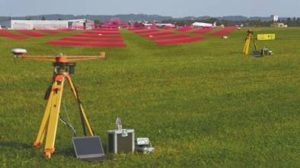Editor’s Note: This working paper published by Inside GNSS is some great work by a group of satnav notables. It encourages use of sophisticated antennae with GPS/GNSS receivers as a way of greatly reducing the threat of spoofing. We heartily agree. There are number of other equipment and procedural measures users can take that will also help to counter jamming and spoofing. Unfortunately, few users seem willing to go to the time and expense of employing them.
Real World Spoofing Trials and Mitigation
Via Direction of Arrival Discrimination

Working Papers explore the technical and scientific themes that underpin GNSS programs and applications. This regular column is coordinated by Prof. Dr.-Ing. Günter Hein, head of Europe’s Galileo Operations and Evolution.
Generation and transmission of faked GNSS signals – so-called spoofing – poses a major threat to GNSS. Spoofing has received considerable attention in recent years, but conclusive assessments or proven countermeasures have still not been found. This article summarizes experience gained while conducting real-world spoofing attacks, with one or two transmission antennas. They were conducted using a modified GNSS radio-frequency (RF) signal generator. A reliable countermeasure against spoofing is direction-of-arrival discrimination and this was realized using a rotating GNSS antenna employing synthetic aperture processing and an adaptive beamforming algorithm. This GNSS receiver/antenna system not only increases the resilience of GNSS reference networks, which are otherwise very vulnerable against sophisticated spoofing attacks, but also allows us to localize the spoofer with high accuracy. It also provides an excellent tool for studying GNSS signal reflections.


